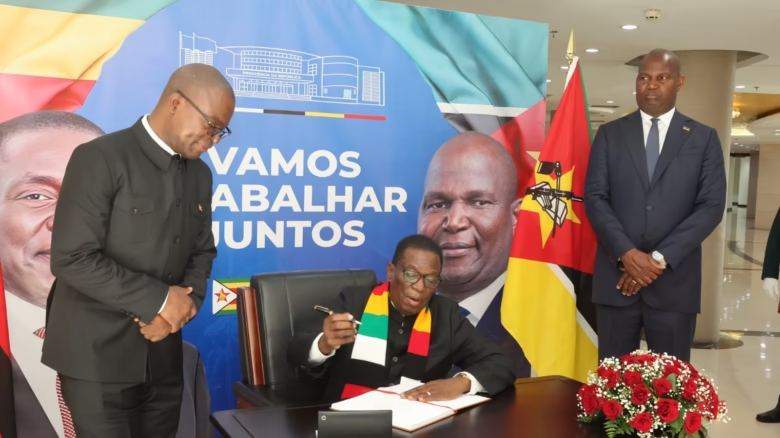
ZANU PF’s interdistrict meeting at Epworth High School yesterday was not a routine political gathering, it was a deliberate fusion of money, power and development staged in one of Harare’s most politically sensitive communities.
Harare Province’s Zone 5, covering Epworth, Mabvuku Tafara, Hatfield and Waterfalls, converged in their thousands to hear feedback from the recent Annual People’s Conference in Mutare, yet the real story was how the party used the platform to dramatise its capacity to deliver both resources and promises.
At the centre of the spectacle was businessman and newly coopted Central Committee member Dr Kudakwashe Tagwirei, standing in as both emissary and message. On behalf of President Mnangagwa, he announced a 300 000 United States dollar revolving fund for the four party wings in Zone 5, the Main Wing, the Youth League, the Women’s League and the War Veterans League, each walking away with 75 000 United States dollars to kickstart income generating projects. It was not framed as charity, it was framed as empowerment with memory, money that must keep circulating within party structures and communities, reinforcing loyalty and dependence.
The money talk did not end there, it was immediately plugged into a development narrative that speaks directly to Epworth’s long standing grievances. Tagwirei further revealed that President Mnangagwa is donating three million bricks and cement for the construction of a secondary school in Epworth. For a settlement that has for years battled overcrowded classrooms, long walking distances and a persistent sense of marginalisation, the promise of a new school lands as both relief and political chess move. Every brick becomes a physical reminder of who brought it.
The composition of the high table told its own story. ZANU PF Secretary for Education, Research and Ideology Charles Tawengwa as guest of honour, war veterans leader Douglas Mahiya, Idah Mashonganyika, Betty Kaseke, Andy Mlanga and Harare provincial chair Godwills Masimirembwa all took turns to address the crowd. Their presence signalled that what was happening in Epworth was not a minor provincial errand, it was a carefully choreographed show of force aimed at tightening the party’s grip on Harare’s peri urban belt.
Layered onto this was the visible presence of business aligned figures, including legislator and gold dealer Scott Sakupwanya, Dr Paul Tungwarara and Obey Chimuka. Their attendance was more than courtesy, it underlined an increasingly open pact between capital and the ruling party, where donations, school projects and revolving funds become the currency of influence. In this matrix, development is not neutral, it travels with a party colour and a slogan.
Tawengwa reportedly stressed that the Annual People’s Conference was serious business, focused on the economy and livelihoods rather than mere speeches. In Epworth, that claim was put on public display, resolutions translated into envelopes, pledges and projects. The message to structures was clear, the conference lives or dies on what you can show your communities after the slogans.
Provincial chair Masimirembwa wrapped the event in the familiar national mantra of leaving no one and no place behind, but on the ground the slogan translated into a very practical instruction, every district must be seen, organised and rewarded. Interdistrict meetings like this one thus double as political barometers. Turnout, enthusiasm and the speed with which promised projects roll out will tell the party who is firmly in line and who still needs convincing.
Analytically, Epworth High School exposed three uncomfortable truths about Zimbabwe’s current political economy. First, urban and peri urban spaces have become high stake battlegrounds where service delivery gaps are increasingly filled by partisan interventions. Where local authorities and government ministries move slowly, the party steps in with bricks, cement and revolving funds, turning development into a badge of political identity.
Second, the line between empowerment and patronage grows thinner each time money is channelled through party wings instead of transparent public institutions. Supporters see opportunities for projects and livelihoods, critics see a sophisticated vote buying architecture, embedded not in one off handouts but in long term financial arrangements tied to party loyalty.
Third, the growing visibility of business figures around such events signals a consolidation of a political business class whose fortunes are deeply tied to the ruling party’s continued dominance. For communities like Epworth, this can translate into real infrastructure and jobs, but it also deepens the sense that access to opportunity flows through ZANU PF structures.
As dust settles on the Epworth High School grounds, what lingers is not only the sound of revolutionary songs but the hard arithmetic of politics. Three million bricks, 300 000 United States dollars, one promised school, four empowered wings and one clear calculation, if development wears party colours, then gratitude must translate into votes. Whether Epworth’s residents accept that equation or quietly rewrite it in the secrecy of the ballot will define the true impact of this unusual, high stakes interdistrict meeting.




